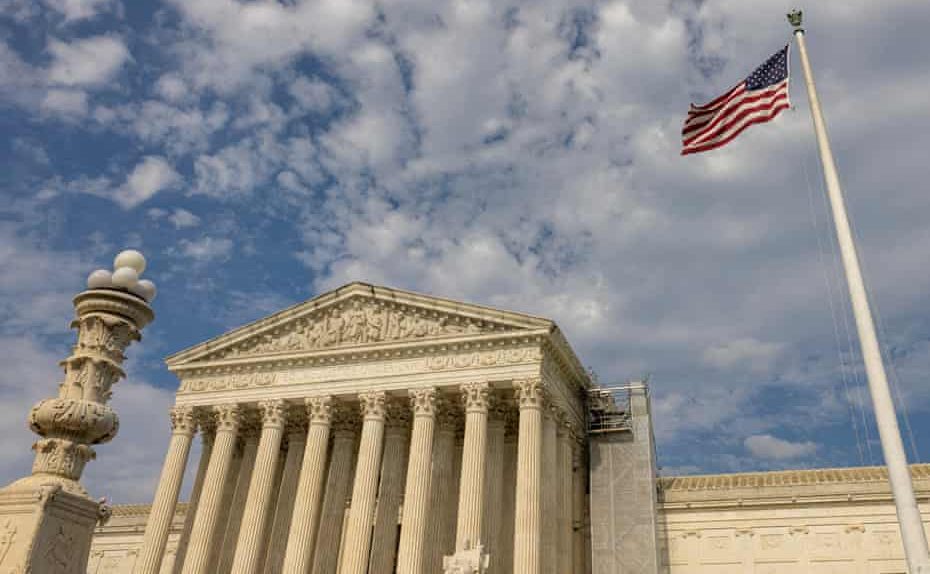In a controversial ruling, the US Supreme Court has paved the way for President Donald Trump’s administration to proceed with mass layoffs of federal workers, a move critics warn could cripple essential public services across the United States.
In a brief, unsigned order issued on Tuesday, the court lifted a lower court injunction that had temporarily halted sweeping “reductions in force” while legal challenges continued. The decision opens the door for potentially hundreds of thousands of job losses across key departments, including Health and Human Services, Veterans Affairs, State, Treasury, and Agriculture.
The ruling represents another significant legal victory for President Trump, who has made dismantling the federal bureaucracy a key component of his administration’s second-term agenda. The mass firings form part of a broader restructuring plan first laid out in “Project 2025”, a right-wing blueprint developed by the conservative Heritage Foundation. Trump has described the overhaul as a voter-endorsed mandate to streamline government and had initially appointed billionaire Elon Musk to lead the effort via a so-called Department of Government Efficiency (DOGE). Musk has since stepped down.
In February, Trump signed an executive order instructing federal agencies to prepare for large-scale staff cuts and structural reorganisation, describing it as a “critical transformation” of government.
Supreme Court maintains Trump’s constitutional authority
The Supreme Court stated it was not evaluating the legality of specific layoffs but found the administration was likely to succeed in arguing that the executive order and its accompanying memorandum were lawful. The justices emphasised that decisions around federal personnel management fall within the president’s constitutional authority.
Justice Ketanji Brown Jackson issued the only public dissent. In a scathing opinion, she accused her colleagues of enabling Trump’s “legally dubious actions” and overturning a “practical, harm-reducing” decision from a lower court without sufficient understanding of the real-world consequences.
“This Court has made the wrong decision at the wrong moment,” she wrote.
The ruling effectively overturns a May decision by San Francisco-based Judge Susan Illston, who sided with a coalition of labour unions, non-profit organisations, and local governments challenging Trump’s executive order. Illston had argued that the president lacked the authority to restructure federal agencies without congressional approval unilaterally. She blocked the layoffs, limited programme closures, and ordered the reinstatement of some dismissed workers, though implementation was delayed pending appeal.
Her decision was upheld by the Ninth Circuit Court of Appeals in a 2–1 ruling, prompting the US Justice Department to seek emergency relief from the Supreme Court. The department argued that presidential control over executive branch personnel was “at the heart” of constitutional governance.
Democrats reacted sharply to the Supreme Court’s decision. Antjuan Seawright, a party strategist, called the ruling unsurprising but deeply disappointing. “This right-wing activist court has shown again that it’s in lockstep with Trumpism,” he said. “This is just the real-life rollout of Project 2025.”
The Democracy Forward coalition also condemned the ruling, saying: “This decision has dealt a serious blow to our democracy and puts services the American people rely on in grave jeopardy. Reorganising government and firing workers en masse without congressional consent is unconstitutional.”
In contrast, Trump allies celebrated the development. Florida Attorney General Pam Bondi praised the ruling on social media, saying: “The Supreme Court stopped lawless lower courts from restricting President Trump’s authority over federal personnel, another win for efficiency and accountability.”
The State Department also issued a statement, declaring: “This decision confirms that the law has always been on our side. Our historic reorganisation continues.”
Since returning to the office in January, Trump has scored a string of Supreme Court victories, many on an emergency basis. The court has allowed his administration to resume deportations of asylum seekers to third countries, end temporary legal status for hundreds of thousands of migrants, implement a ban on transgender military personnel, and override lower court orders reinstating dismissed federal employees.
The court has also repeatedly sided with DOGE, the administrative arm spearheading the government overhaul, and recently curtailed the power of federal judges to issue nationwide injunctions against executive actions.
As litigation over Trump’s reorganisation plan continues, critics warn that the ramifications of Tuesday’s ruling could be swift and severe, threatening healthcare, veterans’ support, international diplomacy, and financial oversight across the United States.



